| Article ID | Journal | Published Year | Pages | File Type |
|---|---|---|---|---|
| 2012160 | Pharmacological Reports | 2010 | 6 Pages |
Sarcosine, a natural amino acid found in muscles and other body tissues, is an endogenous glycine transporter type 1 inhibitor that increases the glycine concentration, resulting in an indirect potentiation of the N-methyl-D-aspartate (NMDA) subtype of glutamate receptors. Sarcosine, similar to other NMDA receptor-activating agents, is an effective adjuvant in the treatment of schizophrenia. It is widely accepted that increased glutamatergic neurotransmission is involved in the initiation and propagation ofseizures. Because sarcosine facilitates NMDAreceptor function, it may affect the seizure threshold. Therefore, we examined the effects of sarcosine on the seizure threshold in two different mouse seizure models: the timed intravenous (iv) pentylenetetrazol (PTZ) infusion test and the maximal electroshock seizure threshold test. In the iv PTZ test, sarcosine did not exert a significant effect on the seizure threshold at any of the doses tested (100,200,400 and 800 mg/kg, ip). However, at doses of400 and 800 mg/kg, sarcosine significantly raised the threshold for electroconvulsions (p < 0.01). The present findings indicate that sarcosine did not lower the seizure threshold. Conversely, sarcosine showed weak anticonvulsant properties by increasing the threshold current for the induction of tonic seizures. Therefore, sarcosine may be considered as a safe adjuvant treatment for schizophrenia without proconvulsant risk. In addition, the compound may serve as an interesting addition to epilepsy treatment.
